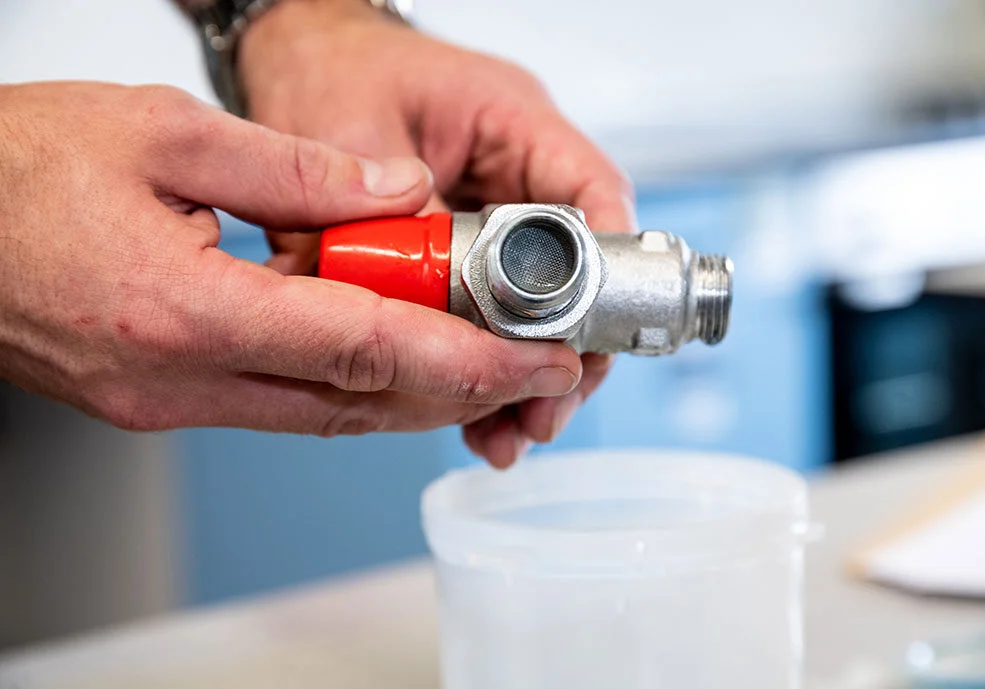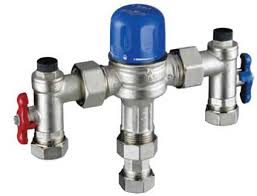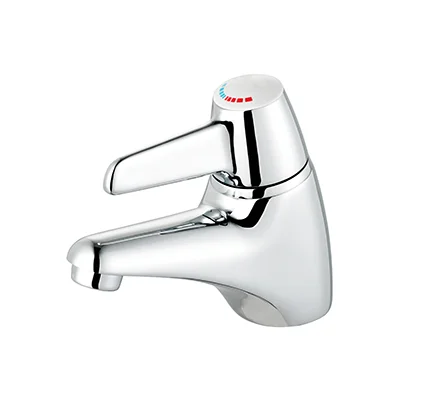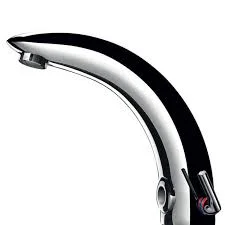Water safety is important to us at Aquatrust. As the experts in water hygiene, regulations and legionella control, we can help you safeguard health in your organisation and meet legal compliance requirements. If you’re thinking about installing a thermostatic mixer valve, or you already use TMVs in your organisation, you may be wondering about TMV regulations and TMV maintenance.
Keep reading to find out more about water temperature safety in our guide to TMVs.

What is a thermostatic mixer valve?
TMVs are valves that use temperature-sensitive elements in order to blend hot and cold water streams. This means that the water coming from a tap or showerhead is temperature-controlled. TMV valves produce water at a warm temperature that safeguards against scalding from hot water, so they’re especially popular in places like schools, care homes and hospitals, where vulnerable people may be using the water systems.
Does a TMV prevent legionella in water?
Not particularly. A TMV can ensure a controlled stream of water from a tap or shower at a safe, consistent temperature. However, blended water downstream of a TMV may provide an environment in which legionella can multiply, thereby increasing the risk of exposure.
When dealing with hot water within any water system, being mindful of the risks of legionella is important. There are precautions that should be taken even when using a TMV, including maintenance, testing and legionella risk assessments. A legionella risk assessment is a legal obligation of every organisation with a water system and should be carried out by a trained professional. If you need help with a risk assessment, please get in touch.
Do I need a TMV?
Before fitting a TMV, the risk of scalding should be assessed against the risk of infection from legionella. If the risk of scalding is not significant, a TMV is not usually required. In cases where serious scalding is a risk – for example, a situation where a person’s whole body would be immersed in water, such as a bath or shower – a TMV should be fitted as a precautionary measure. This is particularly true in cases involving the very young or elderly.
TMVs should also be fitted at wash hand basins and sinks used by the very young, very elderly, infirm and severely disabled people, or those with sensory loss.
What are the options for temperature-controlled water?
There are a few different approaches that can be taken if you want a constant stream of blended, temperature-controlled water.

The most common approach for blending water is a thermostatic mixer valve. This is fitted to the pipework supplying the asset and sits between the hot and cold supply pipework and the outlet tap. A TMV is generally recommended in instances where a scald risk is presented in commercial or public premises, for example in a wash hand basin in a school.

Alternatively, and preferably, a thermostatic mixer tap can be used. This blends water at the point of use and reduces risk. A TMV tap is a good choice for more vulnerable settings, such as hospitals or care facilities. They are also sometimes used in disabled WC’s where preventing scald risks is imperative.

Finally, another option is a mixer tap which mechanically blends hot and cold water within a chamber. If the bar on the side of the tap is set to the cold setting, only cold water will flow to the outlet, and likewise with hot water. This tap can still provide a scalding risk as it works on a mechanical adjustment and doesn’t have a failsafe setting. For this reason, these taps are typically used in more general settings where scald risks are less likely, like non-care facilities. Mixer taps are good choices for places where hot water at the outlet is necessary for cleaning, washing up and general domestic activities.
What should be considered before fitting a TMV?
There are a few considerations to be mindful of when fitting a TMV in order to decrease risks.
- TMVs should be incorporated directly into the tap fitting. The mixing of water at the point of use is preferable.
- TMVs fitted with low flow-rate spray taps can increase risk.
- TMVs should be fitted as close as possible to the point of use to minimise the amount of stored blended water.
- A single TMV serving multiple outlets can increase risks.
- Where TMVs are designed to supply both cold and blended water, an additional separate cold tap is seldom needed. This can become an infrequently used outlet.
How to maintain TMVs
TMVs need regular servicing and testing to make sure they’re working correctly, and to ensure there are no harmful levels of legionella bacteria in the water supply. You should always risk assess if a TMV is required within your specific operation, and ensure you keep on top of maintenance.
- Where needed, inspect, clean, descale and disinfect any strainers or filters associated with TMVs.
- To maintain protection against scalding risk, TMVs require routine maintenance. This should always be carried out by a competent person in accordance with the manufacturer’s instructions. If you need assistance maintaining your TMVs, we can help.
TMV regulations UK
In any business, it’s important to manage safe water temperatures. As part of a well-maintained water system, TMVs should be installed correctly and then regularly tested and cleaned, according to HSG 274 Part 2.
Regular, ongoing maintenance and monitoring means managing the risk of legionella bacteria within your water system.
TMV maintenance checklist
Maintenance of your TMVs is important to make sure they’re working correctly. Servicing and testing can also detect harmful levels of legionella bacteria within your water supply.
Maintenance of a TMV could include:
- A visual inspection
- Water temperature testing
- Cleaning, descaling and disinfecting
Maintenance should always be carried out by a water safety expert who’s experienced in carrying out checks and knows specifically what to look for. If you’re unsure, it’s always better to leave water safety in the hands of a professional.
At Aquatrust, we’re your trusted water safety partner. We can help manage safety and compliance within your water systems, including maintenance of TMVs. Please get in touch with our friendly team to find out how we can help you.


